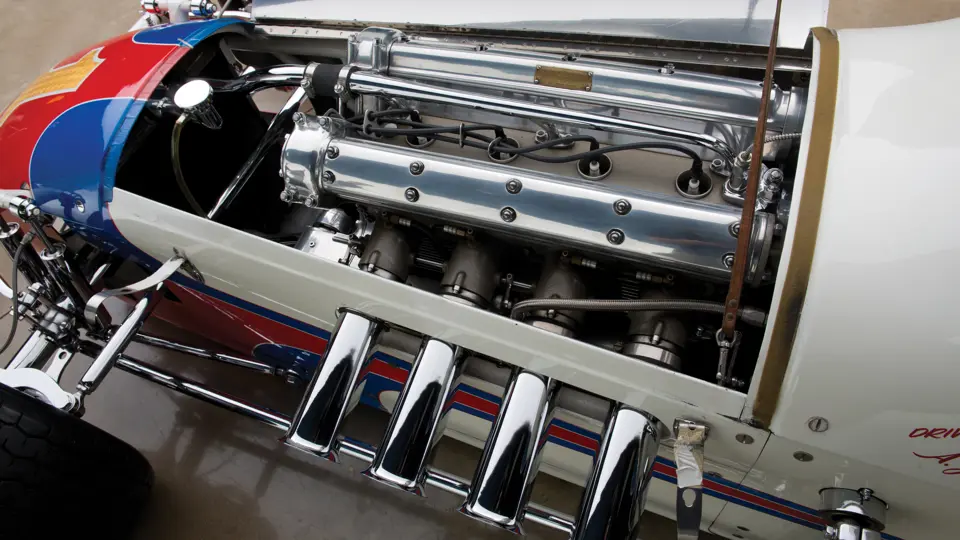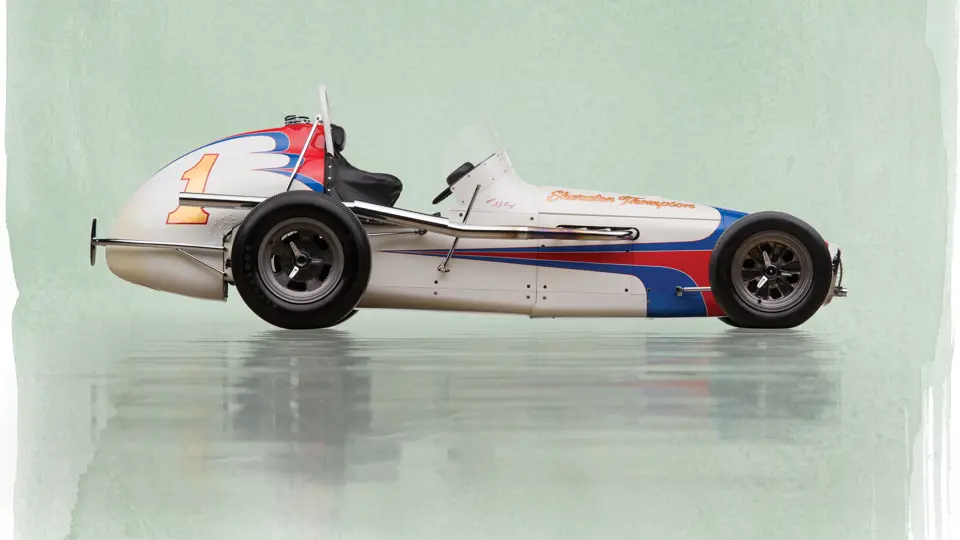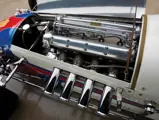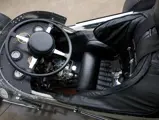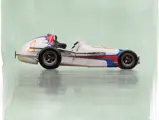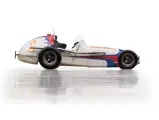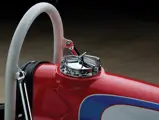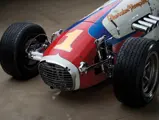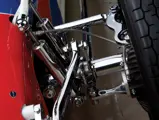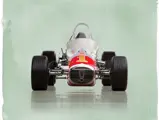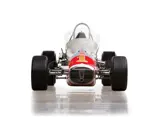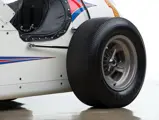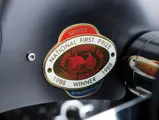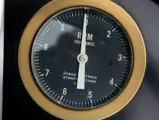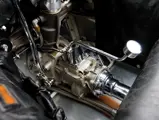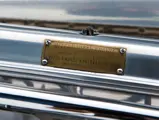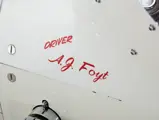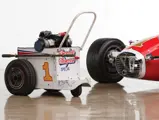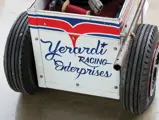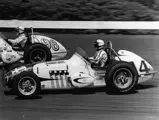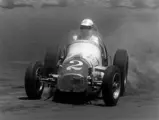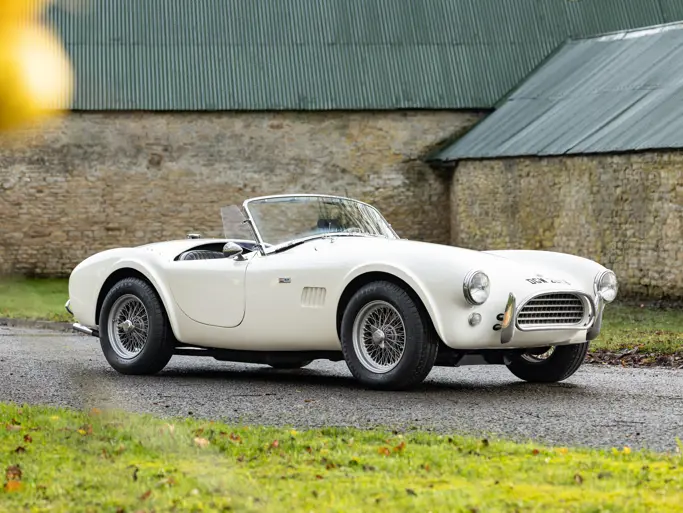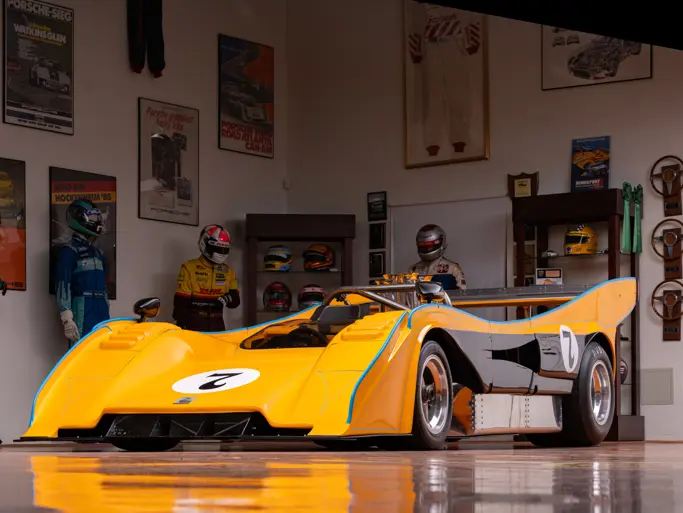255 cu. in. Offenhauser DOHC inline four-cylinder engine, Meyer-Drake two-speed transmission with reverse, tubular front axle and a Halibrand Championship rear end with a three-inch open tube axle, front and rear cross-torsion bar suspension, and Halibrand four-wheel disc brakes. Wheelbase: 96 in.
For the 1964 USAC season, reigning champion Sheraton-Thompson Racing, led by George Bignotti, returned in grand style, armed with a beautiful, state-of-the art Dirt Championship car built by the legendary Wally Meskowski. Although it was similar to the very successful 1960–1963 car, Meskowski made a number of subtle improvements that effectively exploited the hard-charging driving style of A.J. Foyt.
The new chassis continued to utilize Meskowski’s trademark placement of two hydraulic shock absorbers at each wheel, except for the left-rear position, where only one shock absorber was mounted. Power-assisted steering was added to reduce steering effort and driver fatigue, and the oil tank was repositioned internally to the rear of the chassis, which improved weight distribution slightly. The most significant improvement was an upswept frame and belly pan, otherwise known as a “kick up,” which had been designed into the right-rear corner of the car. This feature was added in response to Foyt’s flat-out driving style, and it prevented the right-rear chassis and belly pan from bottoming out while exiting corners under full throttle.
The well-seasoned team absolutely dominated the 1964 USAC calendar, winning its fourth National Championship in only five seasons. Its record-setting 10 victories out of 14 races, which includes five victories with the team’s Watson roadster on pavement and five dirt-track wins in the new Meskowski, is an achievement that has been duplicated just once, by Al Unser in 1970.
The eventful 1965 season was marred by a severe accident during the January NASCAR race at Riverside, where Foyt, driving another car, suffered a broken back and other serious injuries. Incredibly, Foyt later attempted to qualify for the Indianapolis 500 and managed to score two dirt-track wins, along with three victories on pavement. While Foyt did capture the pole in 10 events, the National Championship proved elusive.
However, Foyt and the Meskowski are best remembered for what was later hailed as “Foyt’s Greatest Ride.” Although the new wave of rear-engined “funny cars” began to overwhelm the traditional roadster-style Champ cars by 1965, Foyt and the Meskowski were still able to stun the racing world at Milwaukee on August 12. Transporter delays prevented the Sheraton-Thompson team from delivering their Lotus-Ford in time for qualifying sessions, but Foyt, undeterred, chose to qualify with the Meskowski dirt car instead. After literally spraying off the mud of the previous day’s dirt race and a quick switch to pavement tires, Foyt received permission to take two extra practice laps before qualifying. Incredibly, Foyt grabbed pole position! Only tire problems and a late pit stop denied Foyt the win, but he did manage to take 2nd place, behind Gordon Johncock.
In 1966, Foyt was sidelined once more, as he was suffering from severe burns that he had received during an accident at an Indy car practice at Milwaukee in June of that year, but he managed a stunning comeback in 1967. Foyt won his fifth USAC Championship, including three victories on the dirt, as well as a third Indianapolis 500 victory and two other wins in the Ford/Coyote rear-engined pavement car.
This car retired in 1968 and was then sold by Foyt to Lou Senter, a long-running USAC team owner. The faithful “Offy” was replaced with a Ford four-cam racing engine at some point, and later, it was replaced with a small block Chevrolet V-8 engine that had an eight-inch setback. A roll cage was added, and the car was actively campaigned by Senter, with Bob Cicconi at the wheel, until as late as 1984, when the car was in a crash at Eldora, Ohio. Vic Yerardi, who had wanted to purchase the car, happened to be at Eldora that very day, and he immediately offered to purchase the car. According to Yerardi, Senter accepted, and he even threw in the original tail and upholstery, some original wheels, and the original rear end assembly.
Over a three-month period, Yerardi and Bobby Seymour restored the chassis, with help from Louie Seymour. Reportedly, while at the Hoosier 100, Yerardi met a stranger who had introduced himself as a former crewmember on this car, and he offered the car’s original front axle to Yerardi. The car was then restored to its former glory, carrying its original tail, rear end, and upholstery. Body work, including the faithful refabrication of several panels, was performed by Jerry Weeks, who utilized period photography to ensure accuracy. Keith Hanson recreated the beautiful white finish, along with the blue, red, and gold leaf accents, which were originally applied by Dean Jeffries. In the interest of authenticity, Jeffries was consulted to correctly match the paint codes.
After the restoration was completed in 1988, the historic car was actively campaigned and displayed by Yerardi at vintage races and shows throughout the United States, and it ultimately won an AACA National Senior award in 1988. In late 1999, the car was purchased by Joe MacPherson and then displayed at Joe’s Garage, along with other significant Sprint cars. In 2008, it was acquired by the Andrews Collection, along with their Watson Roadster.
This 1963 Meskowski-built Sheraton-Thompson Championship Dirt Car has been impeccably restored, with many period competition victoriesto its name and having been driven to two USAC National Championships by the great A.J. Foyt, and as such, it is a lasting tribute to its owners, drivers, and restorers. It will certainly provide a welcome entry to a growing number of vintage racing car events, including, most appropriately, the Vic Yerardi Memorial, where it may very well be the star attraction.




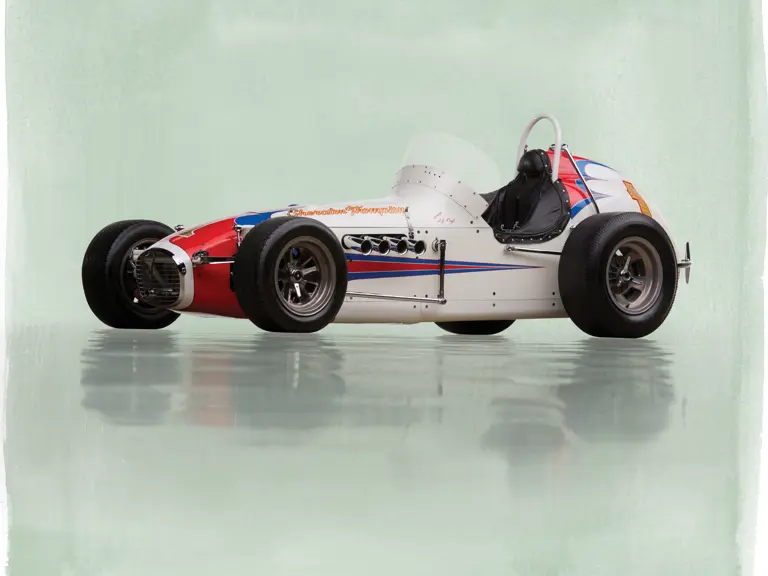
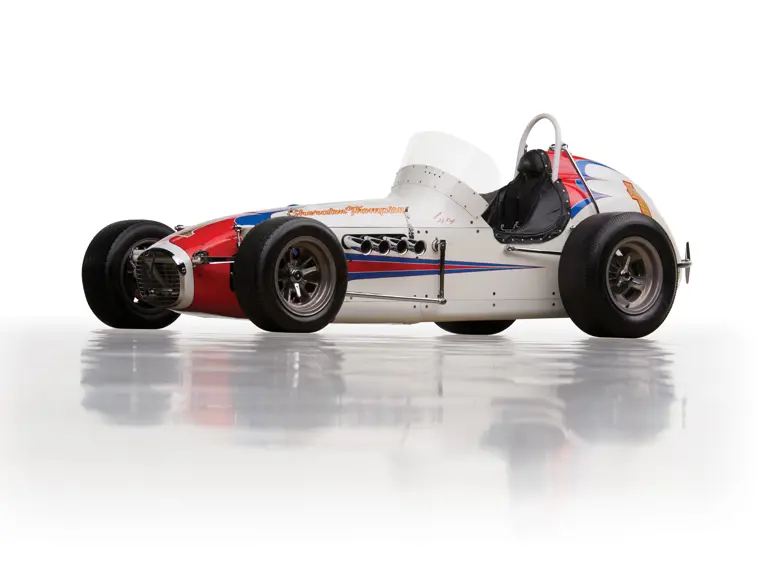
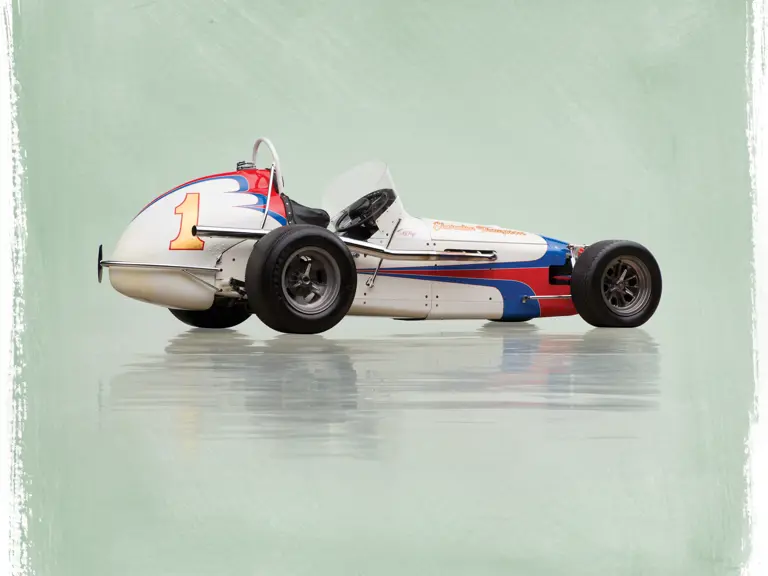

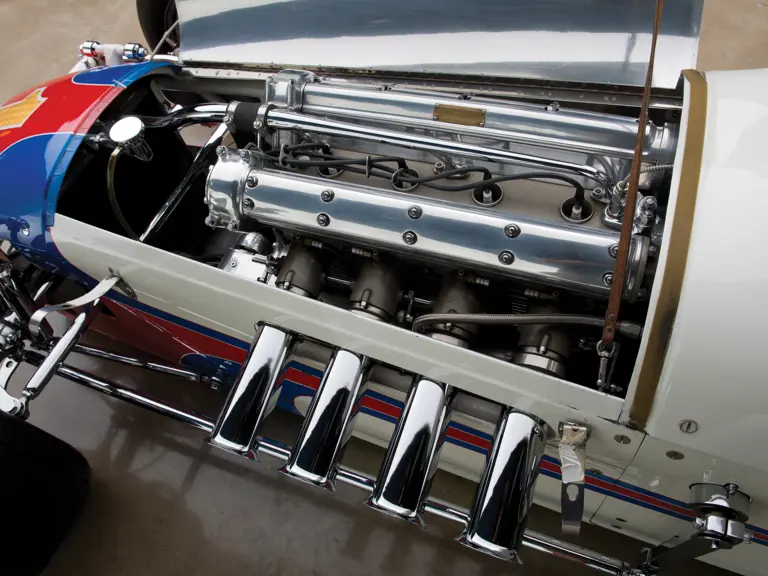
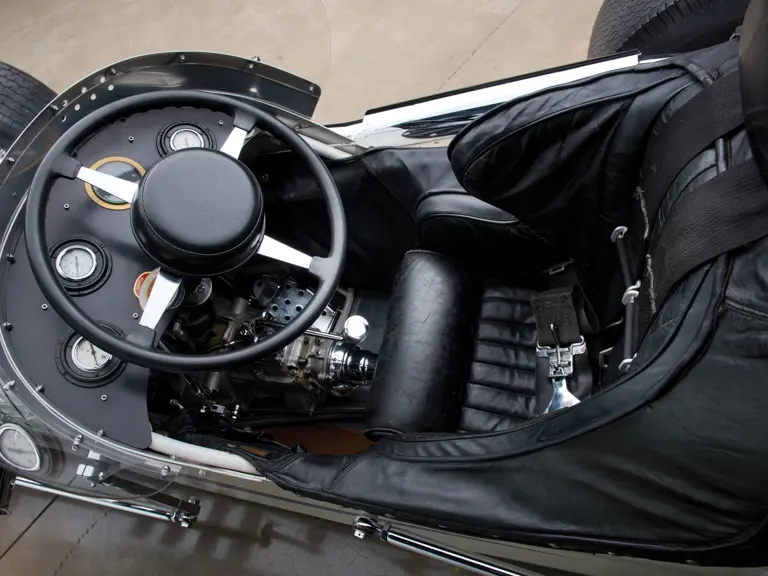
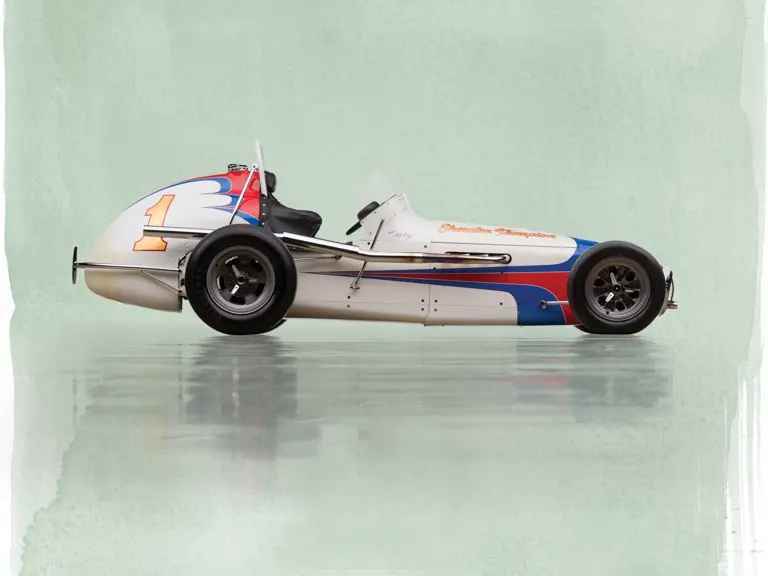
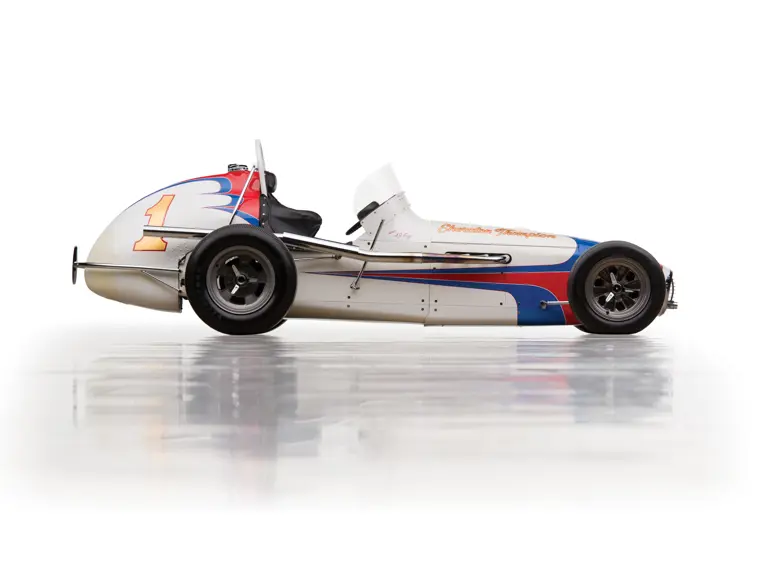


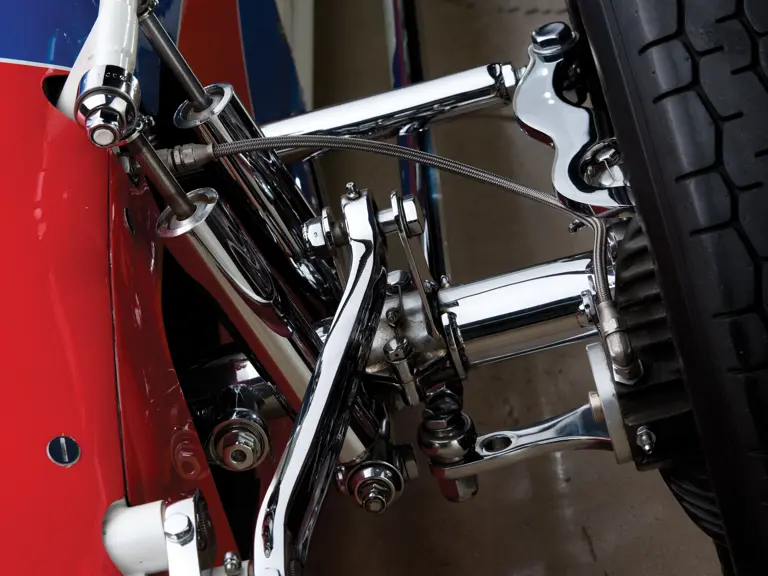
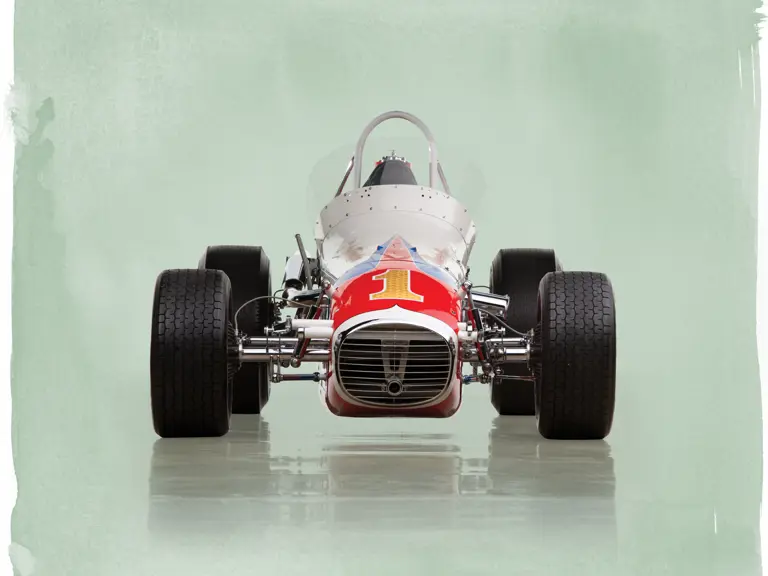
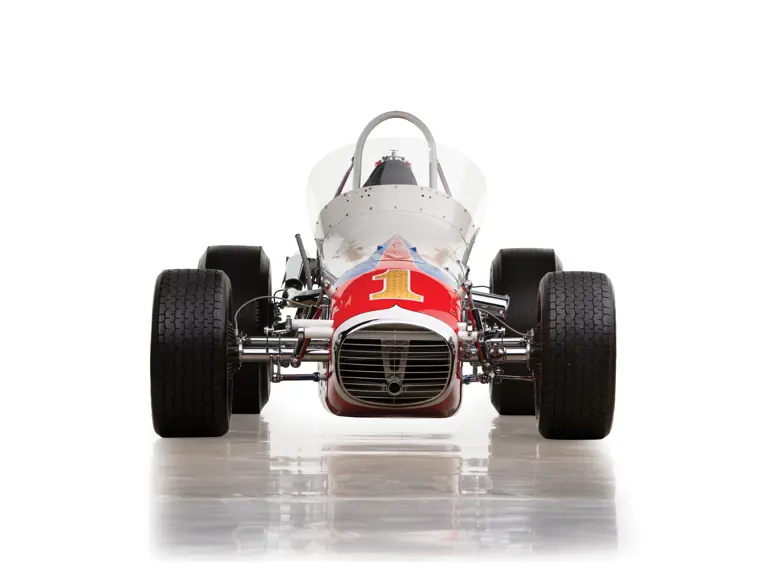
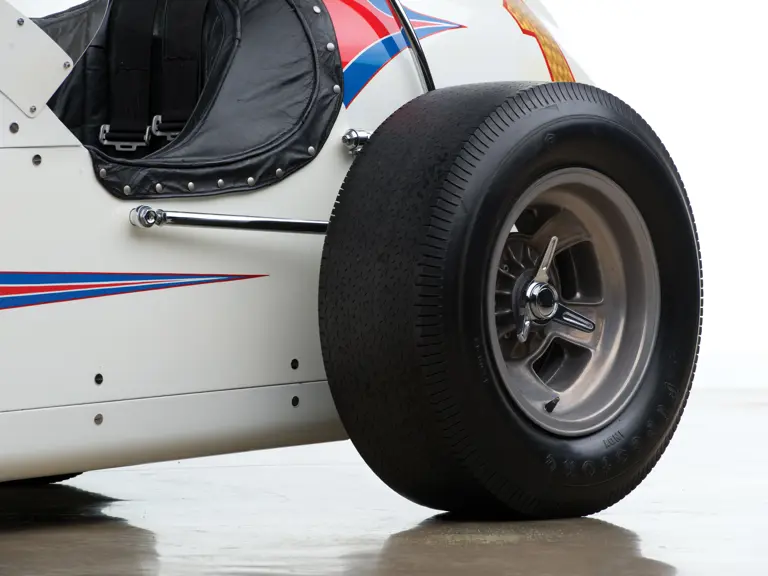
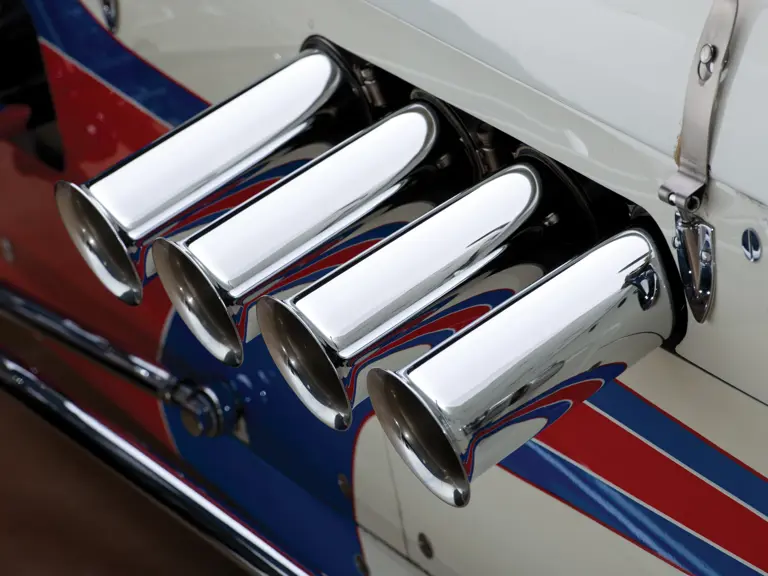

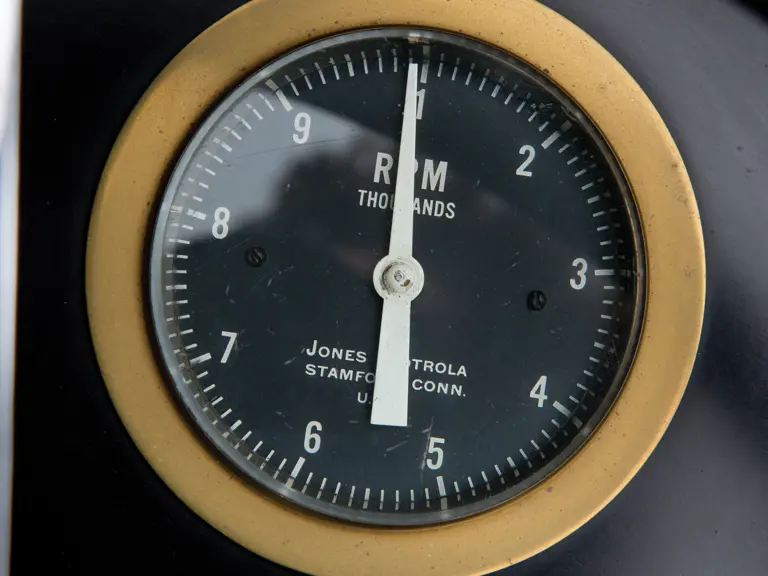

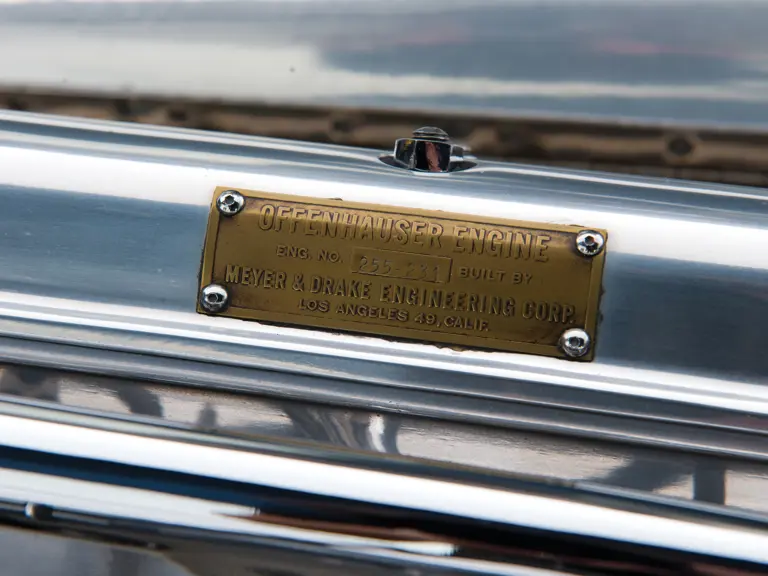
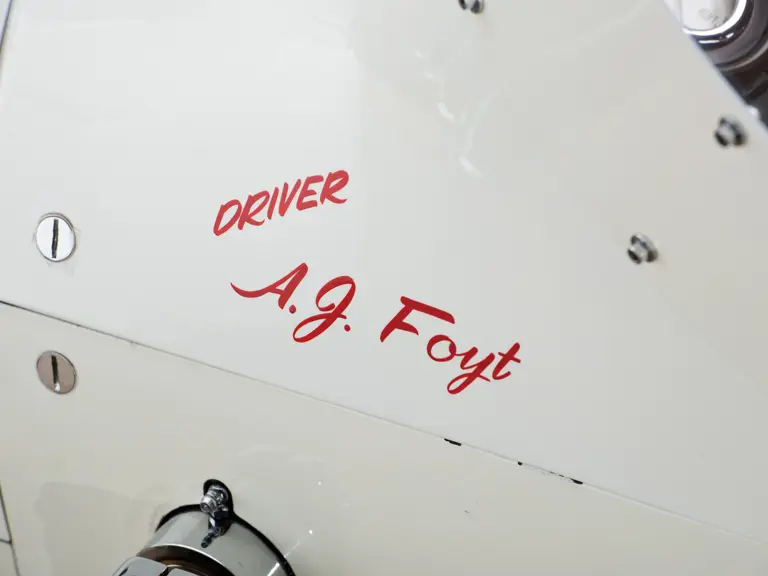
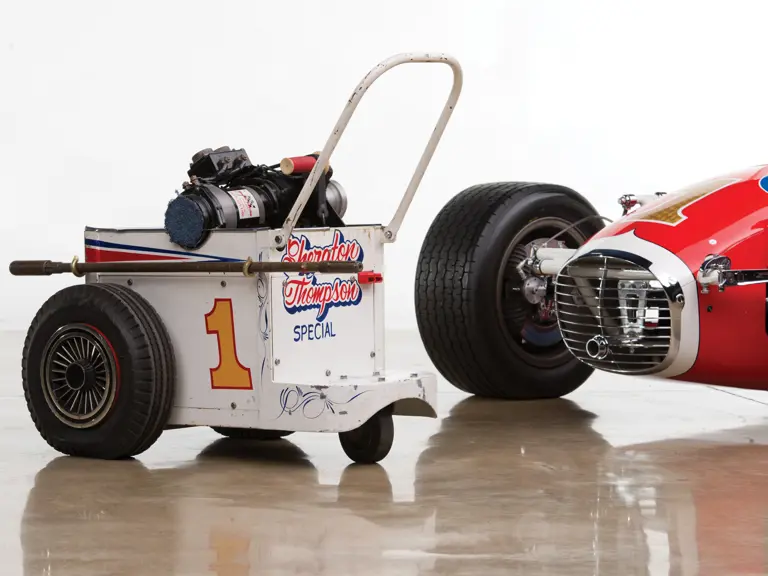

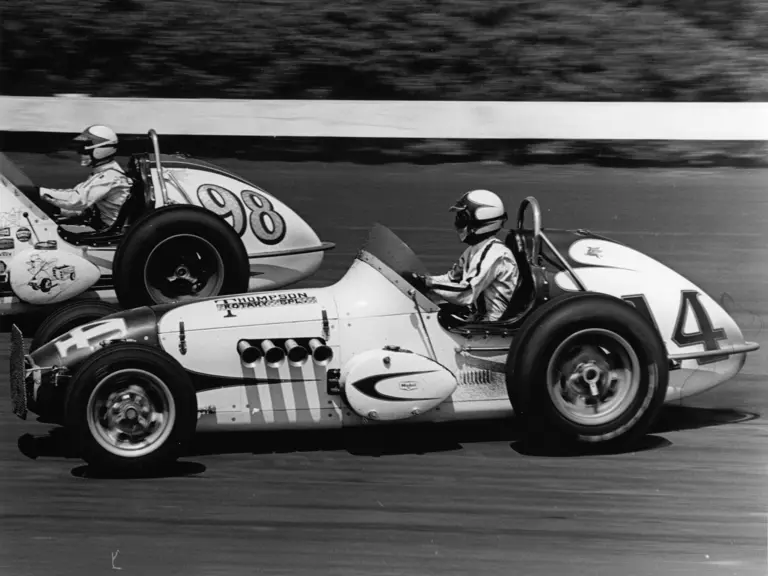
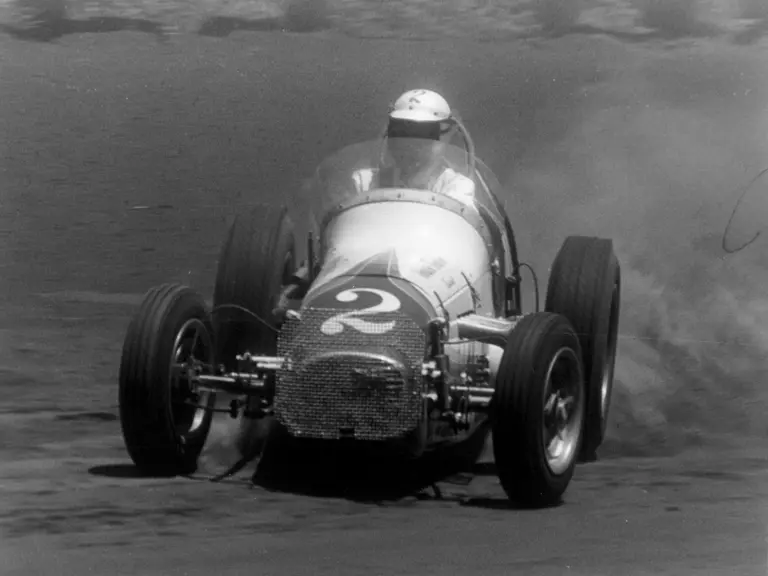
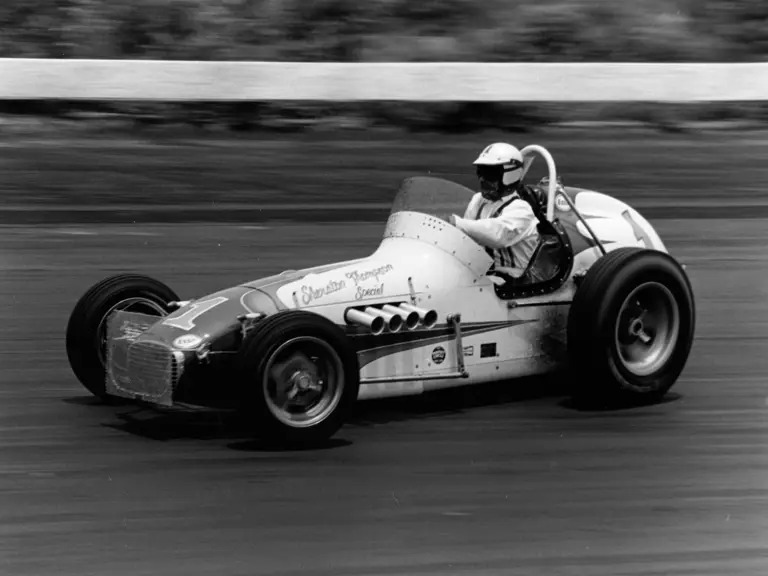
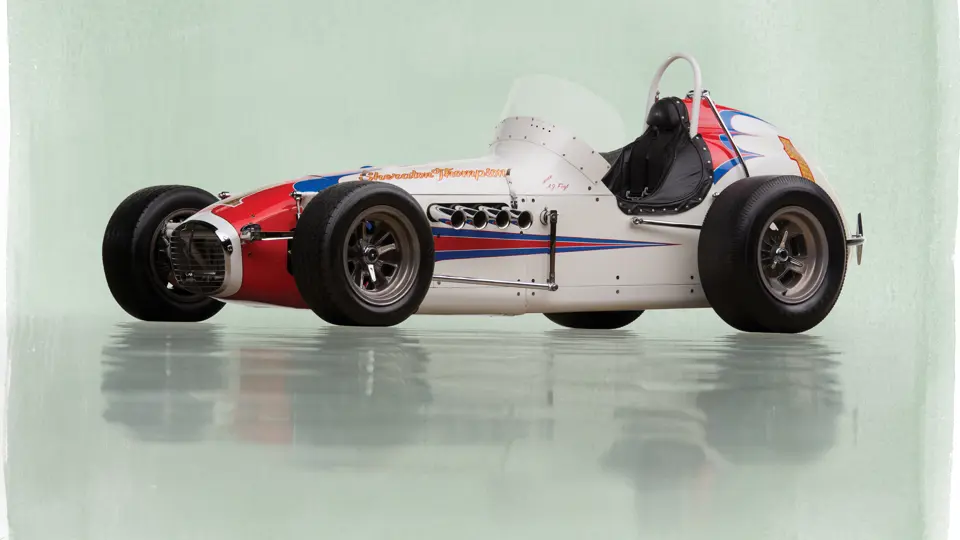
 | Fort Worth, Texas
| Fort Worth, Texas
